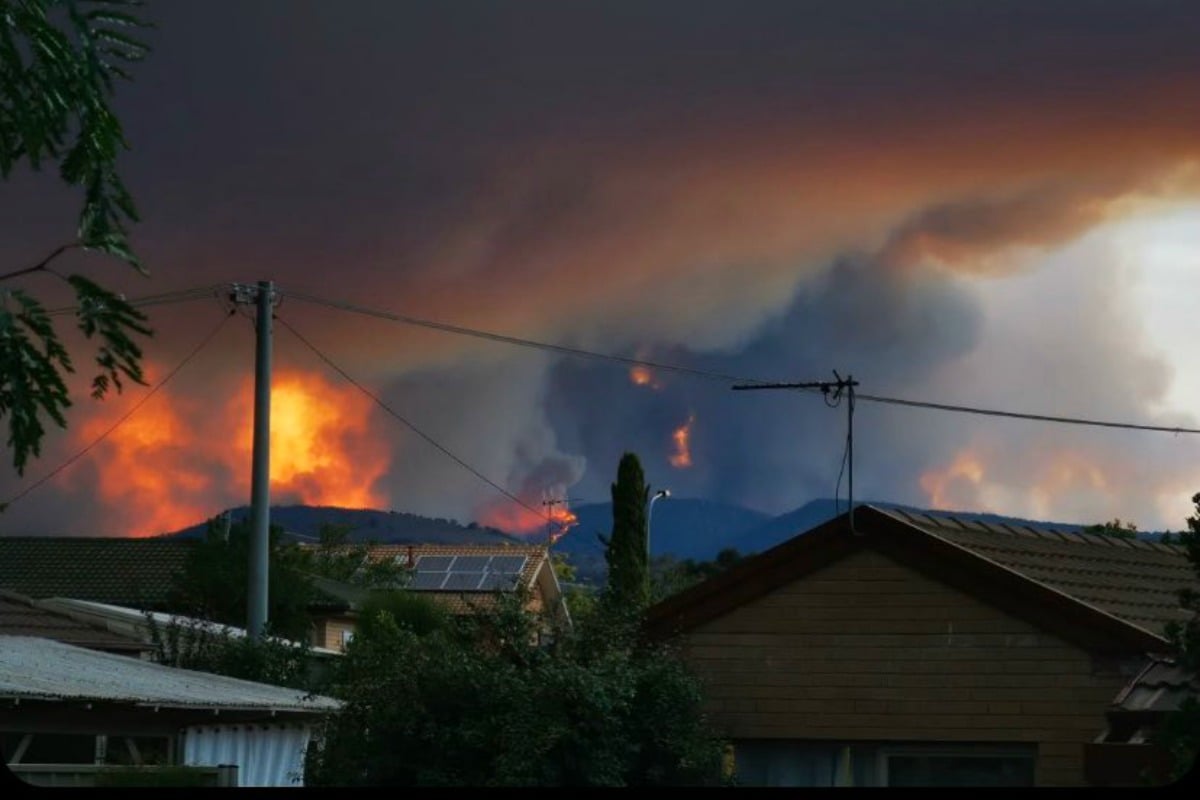
Feature image: Twitter/tamzy888.
On January 18, 2003, Canberra experienced its worst natural disaster.
A bushfire roared through the city’s south-west destroying nearly 500 homes and killing four people.
It was caused by a series of dry lightning storms, but largely took Canberrans by surprise as it quickly turned into a firestorm that created its own weather system and barrelled towards homes.
Now, the ACT is in flames again almost to the day 17 years on.
It’s being called the worst fire threat the area has seen since the 2003 disaster, with the monstrous fire quadrupling in size in a single day.
This is what it looks like. Post continues after video.
It feels like the bushfires will never end.
We’re just about to get to the end of five long months of Australian bushfires, with at least two months left of official bushfire season.
Practically every state and territory has been hit, with 36 people dead and more than 1.25 billion animals lost.
Right now, it’s Canberra’s turn.
